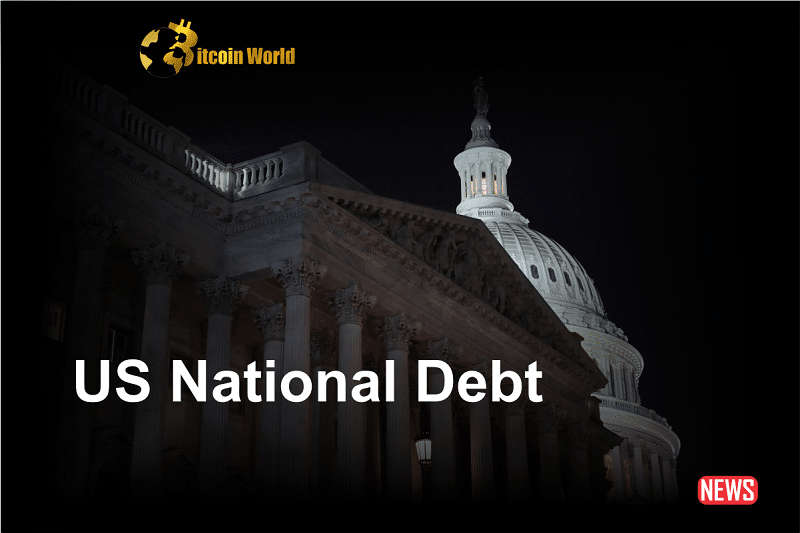Hold on to your hats, folks, because the numbers are in, and they’re not pretty. America’s debt situation is flashing red, with the national debt soaring past a jaw-dropping $33 trillion! Yes, you read that right – trillion with a ‘T’. Think of it: that’s more than many people can count zeros! This isn’t just abstract economics; it’s a reality hitting closer to home as rising interest rates pile pressure on an already wobbly economy.
Remember when everyone was talking about the debt ceiling drama? Well, it turns out that lifting it was like opening the floodgates. Since that so-called ‘crisis’ (which, let’s be honest, feels like a recurring episode), the US government has been adding roughly $1 trillion to the national debt every month. Maya MacGuineas, President of the Committee for a Responsible Federal Budget, didn’t mince words, stating, “The United States has hit a new milestone that no one will be proud of: our gross national debt just surpassed $33 trillion.” It’s a milestone, alright, but definitely not the kind we celebrate with fireworks.
$33 Trillion and Counting: How Did We Get Here?
Let’s break down this colossal figure and understand the speed at which this debt is accumulating:
- Recent Surge: In just the last five years, the US has tacked on a staggering $11.5 trillion to its debt. That’s a mind-boggling average of $2.3 trillion per year!
- Interest Rate Impact: Surging interest rates are like adding fuel to the fire. The cost of borrowing is going up, making it more expensive to service this massive debt.
- Debt Ceiling Dilemma: The debt ceiling, often presented as a tool to control spending, seems to have become more of a political football. While temporarily suspended, it’s set to return in January 2025, promising more fiscal showdowns.
The $1 Trillion Interest Bill: Can We Afford It?
Here’s another scary number: America is hurtling towards spending $1 trillion annually just on interest payments. Think about that for a second. That’s a trillion dollars that could be going towards infrastructure, education, healthcare, or… well, pretty much anything else. The Kobeissi Letter rightly asks, “How can this end well?” It’s a question many are starting to ponder with increasing urgency.
To put this interest burden into perspective, consider this:
| Category | Amount (Annual Estimate) |
|---|---|
| US National Debt Interest Payments | ~$1 Trillion |
| Cryptocurrency Market Cap (Total) | ~$1.1 Trillion |
Yes, the interest we’re paying on our debt is almost as much as the entire value of the cryptocurrency market! That’s a stark illustration of the sheer scale of this financial obligation.
Debt Clock Ticking: $50 Trillion by 2030?
The real-time US debt clock is a sobering website to visit. As you watch the numbers tick relentlessly upwards, it’s hard not to feel a sense of unease. Currently hovering around $33.04 trillion, the debt clock ominously projects a national debt of $45 trillion by 2027. Extrapolating this trend, we could be staring at a $50 trillion debt figure well before the end of the decade. Is this sustainable? Many experts are saying a resounding “no.”
Debt-to-GDP Ratio: Are We in Dangerous Territory?
Another crucial metric to watch is the debt-to-GDP ratio, which currently stands at a worrying 122.4% according to the debt clock. This means our national debt is significantly larger than the entire value of goods and services the US economy produces in a year. While Treasury Secretary Janet Yellen focuses on net interest as a share of GDP, not everyone shares her apparent calm.
Janet Yellen’s preferred metric: Net Interest as a Share of GDP
This metric looks at the government’s net interest payments relative to the size of the economy. While it offers a different perspective, critics argue it might downplay the long-term risks of a rapidly growing debt.
Expert Alarms: Is a Credit Bubble Burst Imminent?
Mark Spitznagel, founder of Universa Investments, doesn’t mince words when he warns that the US is trapped in the “greatest credit bubble in human history.” He emphasizes the unprecedented levels of debt and leverage in the system, stating, “We’ve never seen this total debt and leverage level in the system. It’s an experiment. But we know that credit bubbles have to pop. We don’t know when, but we know they have to.” His warning is a stark reminder that ignoring these mounting debts could have serious consequences.
Personal Pain: Rising Interest Payments Hit Consumers
This debt crisis isn’t just about government balance sheets; it’s affecting everyday Americans too. Personal interest payments have surged to a record $506 billion in July, an 80% increase since 2021. As interest rates climb, everything from credit card debt to mortgages becomes more expensive, squeezing household budgets and impacting consumer spending, a critical engine of the US economy.
Navigating the Uncharted Waters of Debt
The question looming over America is how to navigate this unprecedented debt crisis. With economic headwinds gathering and interest payments skyrocketing, the path forward is far from clear. Ignoring the problem is no longer an option. A serious and honest conversation about fiscal responsibility, government spending, and long-term economic health is urgently needed. The $33 trillion debt milestone is not just a number; it’s a wake-up call. Will America heed the warning before it’s too late?
Disclaimer: The information provided is not trading advice, Bitcoinworld.co.in holds no liability for any investments made based on the information provided on this page. We strongly recommend independent research and/or consultation with a qualified professional before making any investment decisions.


